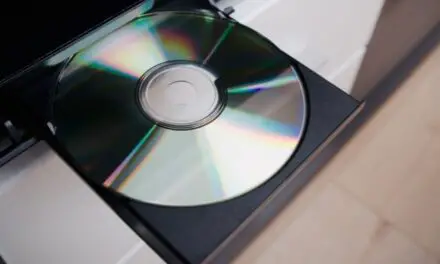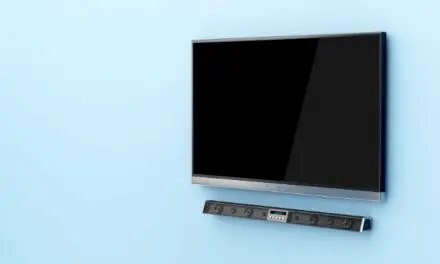We often use our TVs in the same way we do our laptops and phones; downloading apps, browsing the web, clicking links, and opening files from USBs.
But our TVs aren’t as equipped to deal with malicious software as our computers and phones are and you might not know there’s a virus on your TV until it has been sitting there for quite a while.
Table of Contents
Can a TV Get a Virus from a USB?

Modern TVs like Samsungs and LGs that have internet capability and allow you to plug in USB devices can contract viruses just like a computer.
Since your smart TV functions using a basic operating system, it can easily be infected by a virus via a plugged-in USB drive.
Generic USB flash drives are some of the biggest risks to TVs because they are designed to store many types of data and can easily be manipulated by unscrupulous individuals.
And viruses are not limited to .exe files; they can also be hidden In .doc, .docx, .html, .pdf and many other file types.
It’s also possible for malicious software to be embedded in or disguised as audio and video files, so you’re always taking a gamble by clicking on a file that’s stored on a USB and plugged into your TV.
In this article, we’ll discuss the ways your smart TV can be infected with a virus, how to prevent it, and steps to take if your TV has already been infected.
What Other Ways Can My TV Get a Virus?
Aside from plugging in a USB device that may have viruses and malware lurking on it, your smart TV can also get a virus if you download apps and other files or browse unsafe websites and click on links and pop-ups.
Downloading Apps
It’s generally safe to download apps from official sites like Google, Apple, and Amazon but unofficial app providers definitely pose more of a risk to your TV.
Apps from official sources, like the Google Play Store, are less likely to contain viruses than unofficial app providers.
Most modern TVs operate with an Android-based operating system, thus the manufacturer has no control over what you download, which makes it easy for hackers to provide infected apps.
To download apps from unofficial sources, you usually have to go into the settings and enable that setting to allow for it – so it might be best to leave that setting alone and only install apps from official sources.
More closely controlled operating systems are less likely to contract viruses since the apps are all vetted and there’s limited ability for you to customize what’s available for your TV to display.
Browsing The Web On Your TV
Surfing the internet on a browser on your TV is also a big risk because any link or pop-up you click has the potential to infect your TV with malware or a virus.
It’s a lot safer and a lot less clunky to leave internet browsing to your PC or phone.
Read Next: What Antivirus Do Hackers Use? (Explained)
Can Cables Carry Viruses Or Malware To My TV?
Cables like standard headphone cables and USB mouse and keyboard cables cannot carry viruses or malware because those types of wires have no way to store memory, which is required to deliver the malicious program.
Viruses are programs and to function, they need to be saved somewhere like a USB or hard drive.
However, cables can be modified to hide software and hardware components inside USB connectors.
When the USB cable is then plugged into your TV or computer, it can be triggered to install malicious software, turn on recording devices, or steal sensitive information.
What About HDMI Cables?
HDMI cables can only transfer video and cannot transport viruses to your TV.
Like other standard cables and wires, an HDMI cable isn’t able to save programs or transfer data to your TV’s storage so it can’t infect it with malicious software.
How Can I Check If My Samsung TV Is Infected With A Virus?
On some (but not all) Samsung TVs there’s an option to run a smart security scan to check your TV for any viruses or malware that may have been contracted through a USB or while connected to the internet.
Although this method is specific to selected Samsung TVs, you can still look through the settings on your TV and see if there is an option to run a security scan.
First of all, go into your TV’s Settings and then choose the General menu setting.
From the General menu setting, locate the System Manager and keep scrolling down until you find the Smart Security option.
Once you go into Smart Security you should see the option to Scan your TV or other connected storage devices, like USBs.
Once you press Scan, your TV will begin to scan the file system for infected files.
Once the scan is complete, you will be notified if there are any infected files and those files will be placed in an isolated list.
Once the infected files have been isolated, they should no longer be a threat to your TV.
You should also have an option to restore files from the isolated list – just in case the system made a mistake and isolated files that you know to be safe.
Are There Viruses Made Specifically For TVs?
Because your TV is less likely to contain passwords and sensitive financial information, only a tiny amount of viruses are made for TVs compared to the number of malicious programs produced for computers and phones.
But because smart TVs are becoming more popular and beginning to interact more with other apps and accounts that contain more of our sensitive data, hackers are beginning to take more of an interest in producing viruses specifically for TVs.
What Will A Virus Do To My TV?
A virus on your TV is not going to have the same potential to wreak havoc as it would on your laptop or smartphone.
Generally, there’s not going to be as much sensitive data (like banking details) to exploit on your TV compared to what would be found on your computer or smartphone.
So there’s less incentive for hackers to put time into developing malicious software to target TVs.
However, malicious software can be designed to use your smart TV’s features against you.
That means that without you knowing hackers could use your TV’s built-in camera and microphone to record you and listen to your conversations.
How Do I Protect My TV from Viruses?
To protect your TV from viruses, you’ll need to run regular security scans (if your TV has that functionality), keep your TV’s software up to date at all times, don’t browse the internet on your TV, and don’t download files are apps from unofficial websites.
Run Regular Scans
Believe it or not, all smart TVs should come equipped with antivirus software – however, it functions slightly differently than that of your laptop, tablet, or phone.
If there’s antivirus software like Norton 360 on your PC it will send you constant messages about potential threats and run scans automatically from time to time.
The antivirus software on your TV will not be so vocal and you’re going to have to go looking for it (If it’s there at all).
Instead of your TV performing scheduled scans, you’ll need to manually activate a virus scan.
Dig out your TV manual (hopefully you still have it) to figure out how and make a point to check at least once a month.
Keep Your TV’s Software Up To Date
Akin to computers, smart TVs have regularly scheduled software updates.
The best thing you can do is not ignore them.
No matter how much you want to watch that new season Netflix released, pushing the “Remind Me Later” button on your software updates is a great way to invite a virus in.
Make it easy for yourself – enable the automatic update feature.
Also, keep any third-party apps and software that are downloaded on your TV up to date.
Use A VPN
Purchasing a secure virtual private network like NordVPN or ProtonVPN and ensuring your smart TV has a wired connection to your internet router, rather than merely connecting wirelessly, are also more secure methods than simply connecting to your Wi-Fi.
Buy Your TV From A Trusted Brand
Stick to buying familiar brand names, such as LG, Panasonic, and Samsung – off-brands are way more likely to contain sketchy programs and less likely to provide regular updates to patch security issues.
Finally, if you need to plug a USB into your TV to access content, plug it into your computer first and scan it for viruses.
How Do I Remove a Virus From My TV?
To remove a virus from your TV, check your TV settings to see if there is an option to run a security scan and isolate malicious files, reset your TV or run a virus removal program on your TV from a USB.
If you have some scary virus message or hacker’s ransom note pop up on your TV screen, here are a few steps you can take to kick that virus to the curb and get your TV back in working order.
Contact the manufacturer and describe or send them images of what your TV screen is displaying so they know exactly how to help you.
If there is no option in your TV’s settings to run a security scan, the best course of action may be to reset your TV to factory settings and the maker should give you instructions on how to do this.
Alternatively, you can download a virus removal program from your computer onto a USB device, then plug it into your smart TV and run the program to kill the bug.
Aiming for a Virus Free TV
The safest way to use your television is to never connect it to the internet, never download anything onto it and never plug a memory device into it.
But that doesn’t sound like much fun and you really don’t need to be that cautious anyway.
Viruses that can impact TVs are still very rare and you are unlikely to encounter one if you take only basic precautions.
Just remember to:
- Stick to buying brands you recognize.
- Make sure to update your TV’s software as often as possible.
- Manually run those antivirus scans.
- Don’t download apps or files from unofficial sites.
- If you have to use a USB, scan it for viruses first using your computer’s antivirus software.
Also, beware of browsing the internet on your TV as it can easily catch a virus through a malicious website.
Try to use a well-protected computer for browsing that can detect malicious software and automatically block popups for your web browsing.
If your TV does get infected and you’re having trouble sorting it, call the manufacturer to guide you through a solution or, if you’re a little more technologically savvy, download some virus-removing software and upload it to your TV.



